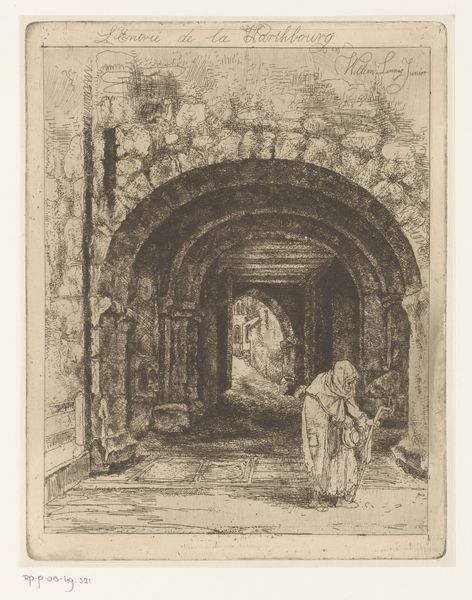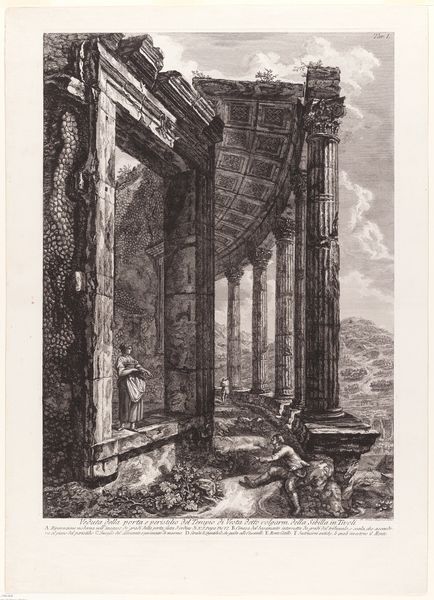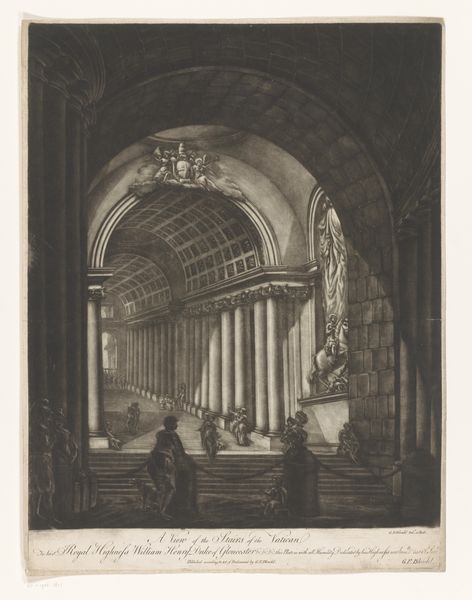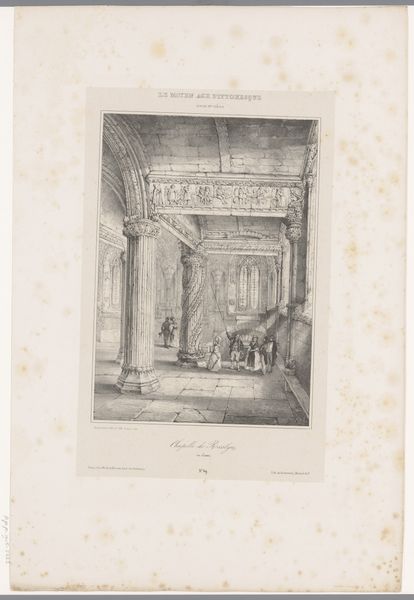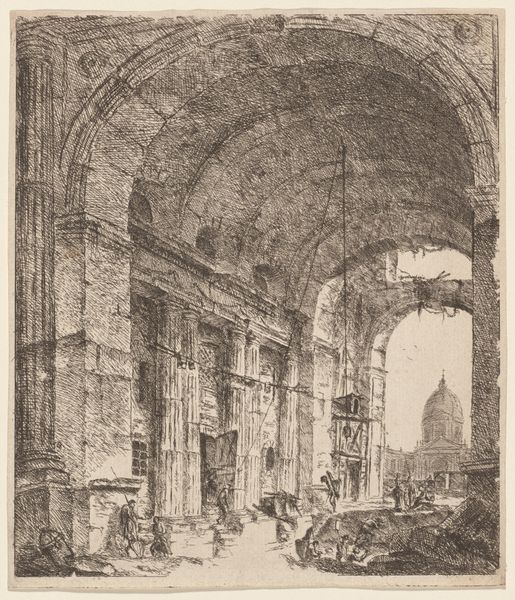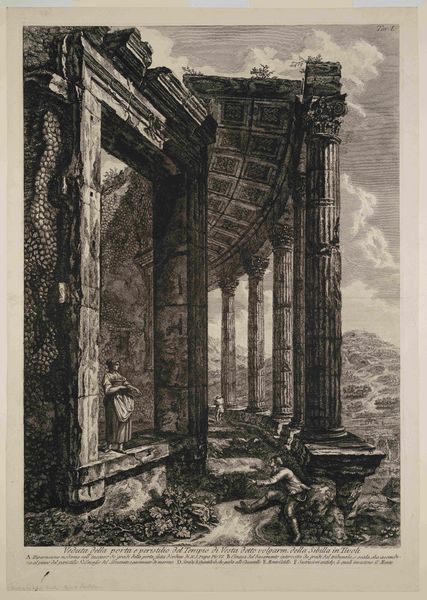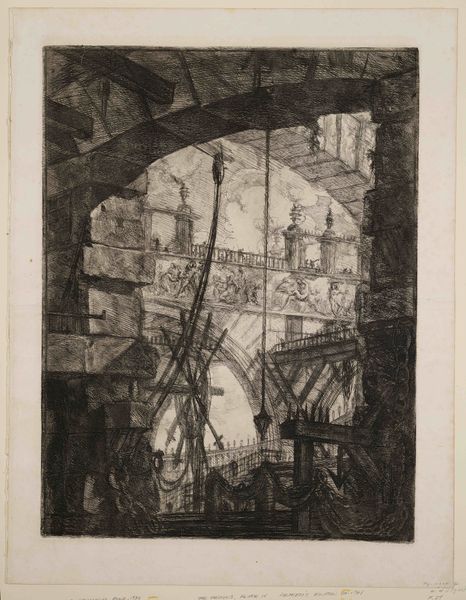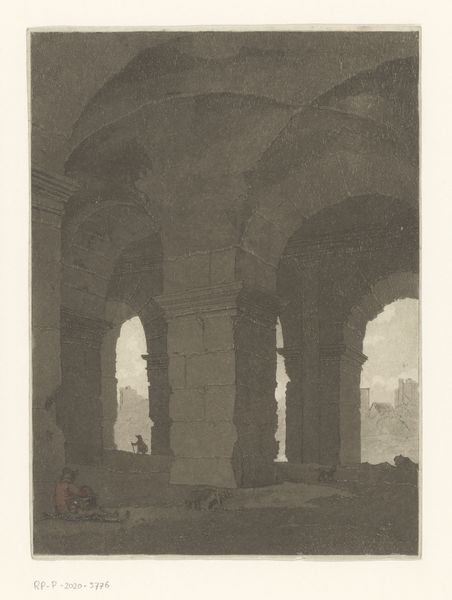
drawing, paper, engraving
#
drawing
#
neoclacissism
#
landscape
#
charcoal drawing
#
paper
#
charcoal art
#
geometric
#
history-painting
#
engraving
#
watercolor
Dimensions: height 555 mm, width 417 mm
Copyright: Rijks Museum: Open Domain
Curator: This engraving is Jacques François Blondel’s "Interior of the Temple of Bacchus," created between 1765 and 1767. Editor: Ooh, my first impression is it feels shadowy, like a stage set for a mysterious rite. All those columns and the dramatic lighting…almost ominous. Curator: Absolutely. Blondel, a prominent architectural theorist of his time, aimed to evoke the grandeur and moral weight of classical architecture, very much in line with the Neoclassical movement. Editor: So, the columns, the temple setting – that’s all about projecting power and permanence? It feels a bit…controlled. I wonder what Bacchus himself would make of it. He’s usually depicted with wild abandon, wouldn't you say? This seems almost designed to tame the divine. Curator: Indeed! This tension is exactly what fascinates me. It reflects how the Enlightenment sought to rationalize and categorize even the most ecstatic elements of ancient life. The print, rendered in such stark monochrome, presents the viewer with a world striving towards order and imposing it on what would have been previously understood as revelry. Editor: It almost feels like the rituals are being…documented, studied, rather than experienced. And who are these people? It’s hard to see. Curator: Likely members of a Bacchic cult participating in rituals honoring the god, who in Roman times presided over wine, fertility, and theatre. Consider the fire, the altar, and figures positioned as performers and observers to understand that tension. Editor: This is Neoclassicism at work. A moment of excess captured with a rational and objective lens. And made…safe for the salon? You know, as a devotee of ecstatic experience myself, I have very mixed feelings about this. Curator: As do I, honestly! I think that's why I keep returning to this print: it so elegantly, yet hauntingly, illustrates our fraught relationship with the past and our constant negotiation between order and freedom. It’s so revealing how the aesthetics become inherently political. Editor: Precisely. A fascinating relic, Blondel's interpretation allows us to look at the gaze through which cultures and ideologies are rendered and interpreted. A sober god in a charcoal dream.
Comments
No comments
Be the first to comment and join the conversation on the ultimate creative platform.
